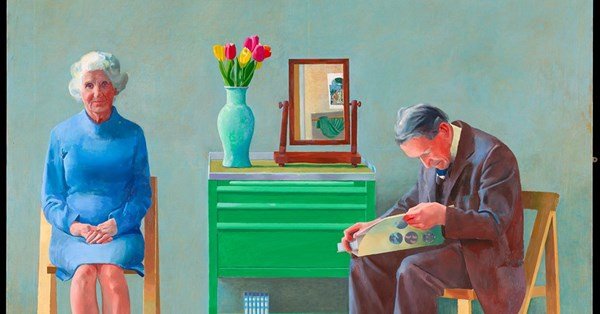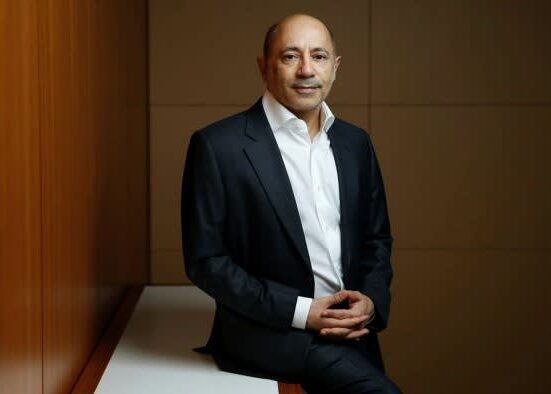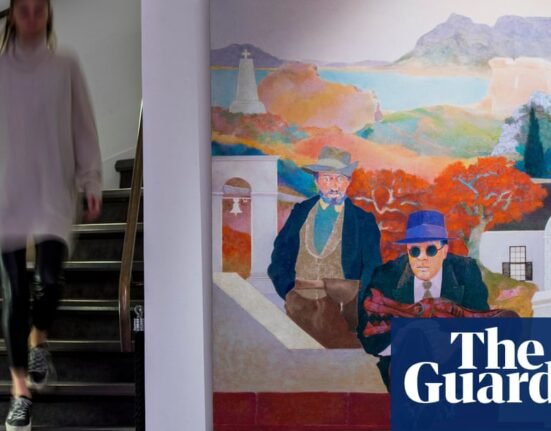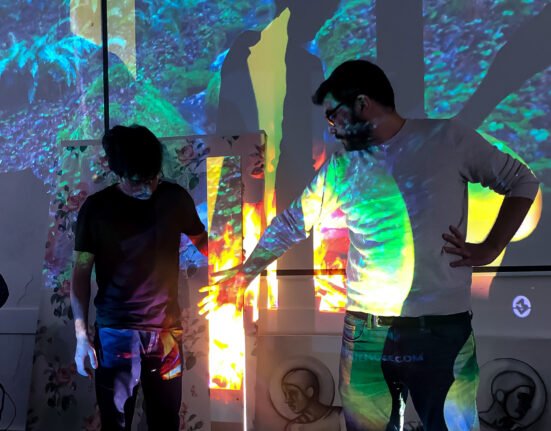ROUGHLY one third of the paintings in the National Gallery’s collection of Western European art are of religious subjects and nearly all of these are Christian. These images, originally made for churches or domestic settings, are now displayed in an entirely different context in the Gallery, which has the task of both exploring what they might have meant to their original viewers and discovering what they might mean to beholders today.
The National Gallery does an excellent job of exploring both aspects of these works, often bringing them into dialogue with other works of art in ways that are engaging and challenging. This small but fascinating exhibition aims to explore what one of the most famous Christian images from the collection means to an artist who isn’t interested in its Christian content. As a result, this is an exhibition offering ways in to the art of Christendom for those who are not believers.
The exhibition sets two of Hockney’s great works — My Parents and Looking at Pictures on a Screen — alongside The Baptism of Christ by Piero della Francesca. It does so, in part, because both of Hockney’s paintings feature reproductions of Piero’s Baptism.
Hockney has explained: “I didn’t visit London until I was 18 years old. The National Gallery was just there. They didn’t do exhibitions in those days. But I often went there as a student. I was always looking at Fra Angelico, Piero, Vermeer and Van Gogh. On those early visits I remember being affected by Piero’s The Baptism of Christ, it was marvellous. I understand what reproductions do. They’ve enriched my life a great deal, and I know a lot of things from looking at them. On the other hand, when you see the real paintings it is a different experience.”
This exhibition gives us the opportunity to reflect on the different experiences and values of seeing artworks in actuality and in reproduction. This is explored further by correspondence between Hockney and the then Director of the National Gallery, Michael Levey, in which they discuss opportunities for artists to make copies of works in the National Gallery and other galleries and the benefit of doing so.
 © The National Gallery, LondonPiero della Francesca (c.1415/20-92), The Baptism of Christ (probably c.1437-45), egg tempera on poplar
© The National Gallery, LondonPiero della Francesca (c.1415/20-92), The Baptism of Christ (probably c.1437-45), egg tempera on poplar
This brings us to what it is that delights Hockney about The Baptism of Christ, which is the way it is constructed: “I think for me in Piero’s Baptism it is a spatial thrill — seeing fantastic figures in space.” He also speaks of the clarity with which the figures are painted and the light, clear, and bright colours used. All of these features of Piero’s painting also inform the two Hockneys included in this show.
In the letter to Levey, Hockney asks to be able to make a copy of a particular painting by Vincent Van Gogh and writes that, over two or three days of making the copy, one is able to see how Van Gogh “did the painting”. To see this, it is necessary “to sit and just look for a long time”. Painting is “a composition involving space” and “you can’t talk about it that well”, “you’ve just got to look at paintings.”
It is this that Hockney depicts in his two images. Both paintings are images of people looking intently in order to pay attention. His mother is looking intently into space, his father is looking attentively at a book, while, in the other image, Hockney’s close friend Henry Geldzahler, the Belgian-born American curator of 20th-century art at the Metropolitan Museum of Art in New York, peers at a folding screen in the artist’s studio on which are stuck four posters of favourite National Gallery pictures.
Piero’s image is different in that his two central characters — John the Baptist and Jesus — are entirely focused on the event of Jesus’s baptism, while the focus of the other characters seems to be elsewhere. Piero makes a holy and prayerful attention central to his scene. Artists such as Hockney have translated that into ways of looking at art deeply and with delight. More recently, however, we have begun to rediscover the linkage that Piero depicts between attentive looking and prayer, particularly through the ideas of Simone Weil.
The value of this exhibition is that it suggests ways of looking which open art to all, and yet, for those who see what Piero saw, it also connects those ways of seeing to our experience of prayer.
“Hockney and Piero: A Longer Look” is in Room 46 at the National Gallery, Trafalgar Square, London WC2, until 27 October. Phone 020 7747 2885. www.nationalgallery.org.uk







